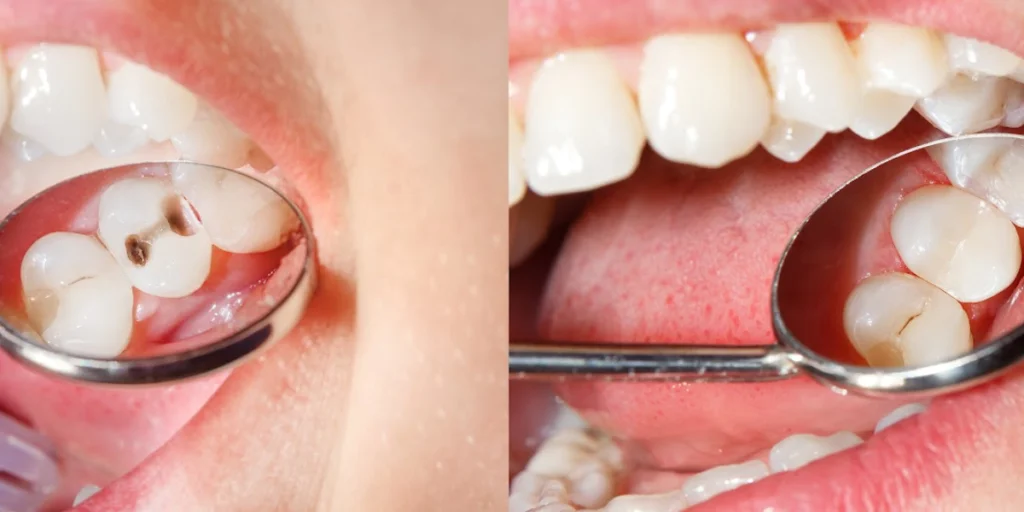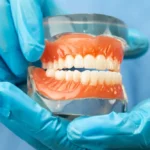Is that toothache making it hard to enjoy your favorite snacks? Or maybe you’ve noticed a sudden sensitivity when you sip something cold? These are classic signs that you might need a filling! But don’t stress—you’re definitely not alone. Teeth fillings are one of the most common dental treatments, helping millions of people restore their smiles and get back to living life without that annoying discomfort. In this blog, we’re here to break it all down for you: why you might need a filling, the different types available, and how to care for them so they last. Stick with us as we dive into how fillings can keep your teeth healthy, strong, and ready for whatever comes next!
What are Teeth Fillings?
Teeth fillings are materials used by dentists to repair cavities or damage in a tooth. When a tooth develops a cavity due to decay, the dentist removes the decayed part and fills the empty space with a dental filling. Fillings help restore the strength, shape, and function of the tooth, preventing further damage.
Why Do You Need a Teeth Filling?
A tooth filling is necessary when you have:
- Cavities caused by bacteria and plaque buildup
- Cracks or fractures in a tooth due to injury
- Worn-out teeth from grinding or chewing hard foods
- Sensitivity or pain due to enamel erosion
If left untreated, a damaged or decayed tooth can worsen, leading to infections, abscesses, or even tooth loss.
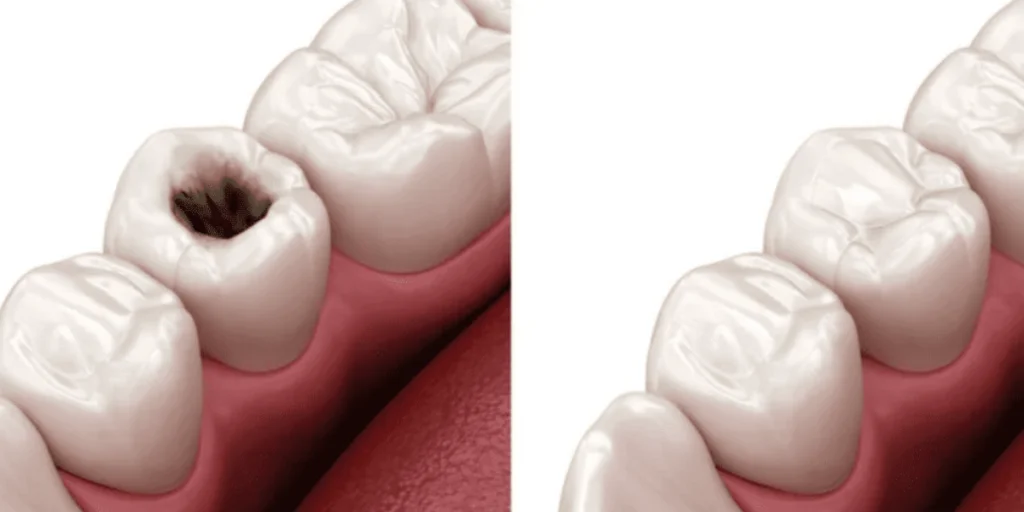
Types of Teeth Fillings
There are several expert dental care services, each with unique benefits and considerations. Here are the main teeth filling types:
- Amalgam Fillings:
- Made from a mixture of metals, including silver, mercury, tin, and copper.
- Durable and long-lasting, ideal for dental filling cavities in the back teeth.
- Composite Resin Fillings:
- Made from a tooth-colored plastic resin.
- Aesthetic and blends well with natural teeth, making it ideal for fillings in visible areas.
- Ceramic Fillings:
- Made from porcelain or similar materials.
- Highly aesthetic and durable, with a natural tooth appearance.
- Gold Fillings:
- Made from gold alloy, it is durable and resistant to corrosion.
- Long-lasting and typically more comfortable, but also the most expensive option.
- Glass Ionomer Fillings:
- Made from a combination of acrylic and glass materials.
- Often used for fillings in areas that aren’t subjected to heavy chewing pressure.
How Is a Tooth Filling Done?
Getting a tooth dental filling is a quick and simple procedure that typically takes 30 to 60 minutes. Here’s what you can expect:
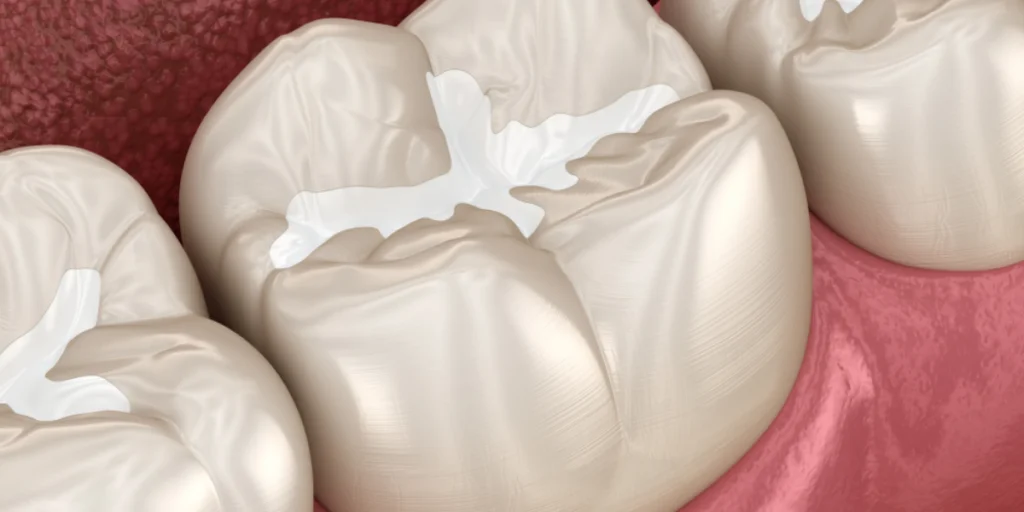
1. Examination and Diagnosis
Your dentist will carefully examine the affected tooth using visual inspection, X-rays, or cavity detection tools to assess the extent of decay or damage.
2. Anesthesia (If Needed)
To ensure a pain-free experience, local anesthesia is administered to numb the area before the procedure begins.
3. Decay Removal
The dentist removes the damaged or decayed portion of the tooth using a dental drill, laser, or air abrasion tool, ensuring all unhealthy tissue is eliminated.
4. Tooth Preparation
Once the decay is removed, the dentist will clean and shape the cavity to ensure the filling material bonds securely and fits properly.
5. Filling Placement
The chosen teeth gap filling material (such as composite resin, amalgam, or ceramic) is applied in layers. For composite fillings, each layer is cured (hardened) with a special light to strengthen it.
6. Shaping and Polishing
After the filling is in place, the dentist will shape and smooth it to match the natural contours of your tooth. The surface is then polished to ensure a comfortable bite and a natural feel.
With proper care, a teeth gap filling can last for many years, protecting your tooth and restoring its function. If you experience discomfort or sensitivity after the procedure, it typically subsides within a few days.
Do Fillings Hurt?
No, you won’t feel pain during the procedure because of the anesthetic. However, you might experience mild sensitivity or discomfort for a few days after getting a dental restoration. This usually goes away on its own.
How to Take Care of Your Fillings?
Proper care helps teeth fillings last longer. Here are some tips:
- Brush twice a day with fluoride toothpaste
- Floss daily to remove food particles
- Avoid hard or sticky foods that could damage the filling
- Visit your dentist regularly for check-ups and cleanings
- Wear a mouthguard if you grind your teeth at night
Signs You May Need a New Filling
There are several signs that may indicate you need a new teeth gap filling. Here are some of the most common ones:
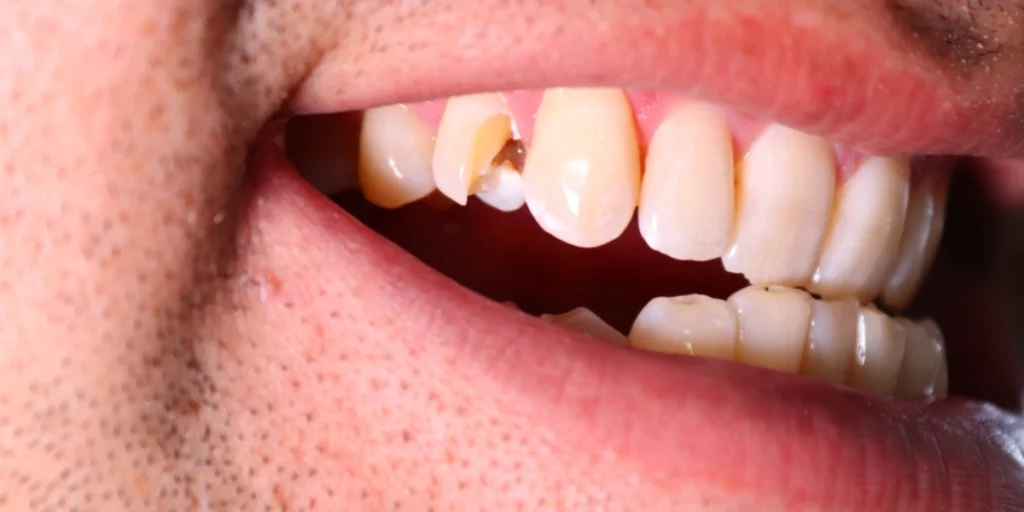
- Pain or Sensitivity
If you experience pain or sensitivity when eating hot, cold, or sweet foods and drinks, it could indicate that your filling is no longer functioning properly.
- Visible Cracks or Chips
Over time, fillings can crack, chip, or break. If you notice a crack or chip in the filling or surrounding tooth, it’s a sign that it may need replacement.
- Discoloration
If the filling becomes discolored or begins to look worn, it might be a sign of deterioration. This is especially common with composite fillings, which can stain over time.
- Filling is Loose or Falling Out
If your filling feels loose, moves when you chew, or has fallen out, it needs to be replaced as it is no longer protecting your tooth.
- Tooth Pain or Sensitivity Around the Filling
If the tooth or the area around the filling feels painful or sensitive, it may mean that the filling is leaking or that there is decay beneath it.
- Receding Gum Line
A receding gum line can expose the edges of fillings, leading to discomfort or even an increased risk of further decay. You may need a new filling to ensure the tooth is properly protected.
- Visible Decay Around the Filling
If you notice new decay forming around the edges of the teeth gap filling, it can compromise the filling’s effectiveness. This may require a new filling to protect the tooth from further damage.
- Changes in the Bite
If you experience a shift in your bite or discomfort when chewing, it could be due to a filling that has worn down, shifted, or cracked.
Best Teeth Fillings in Abu Dhabi
If you’re looking for the best teeth fillings in Abu Dhabi, Marigold Dental and Orthodontic Clinic has you covered! We use advanced tooth-colored aesthetic composite fillings that blend smoothly with your natural teeth, ensuring both durability and a flawless appearance. Whether you need to repair a cavity, fix a chipped tooth, or replace an old filling, our expert dentists provide pain-free, long-lasting solutions. Don’t let dental issues hold you back—book an appointment today for the best teeth fillings in Abu Dhabi and restore your smile with confidence!

To Wrap Things Up
Teeth fillings are an effective way to repair cavities and restore your smile. With different types available, you can choose the one that best fits your needs and budget. The key to avoiding cavities and fillings in the future is good oral hygiene and regular dental visits. If you suspect you need a filling, don’t wait—visit the best dental clinic in Abu Dhabi and keep your teeth strong and healthy.
Have questions about fillings? Talk to us today!

